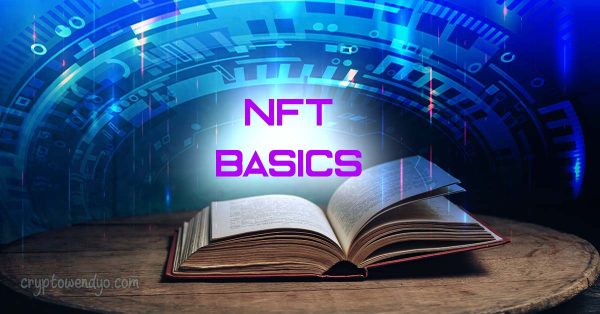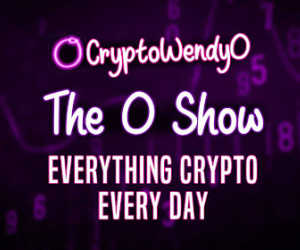What is an NFT and how does it work? NFTs are tokens we can use to represent ownership of things like music, movies, art, in-game items, and even real estate.
Recently, we received a reader email saying that they loved our articles, but sometimes we get into some pretty advanced topics without really going over the basics.
I think that this is a great point, and while I do try to explain things as well as I’m able, sometimes it can be hard to put yourself back in the shoes of someone fresh to the space, who may not be familiar with all of the relevant terms, tech, history, etc.
So, today, I wanted to briefly cover some of the basics of NFTs, and please remember that you can always drop me a comment on Twitter with any questions you have, and I can follow-up with future articles or a continuing series, as needed.
What Are NFTs?
Image courtesy Marco Verch under CCL 2.0, with attribution
Well, we can’t get any more basic than that, can we?
NFT stands for Non-Fungible Token.
I know “fungible” isn’t exactly part of the modern lexicon (for that matter, neither is lexicon), but think of fungibility as interchangeability, to an extent. The federal reserve was say “uniform”. A penny is fungible, because one penny can be exchanged for another penny.
I say “to an extent”, because there are some caveats to that. A rare penny, for example, obviously isn’t something most people would exchange for another common penny.
Bitcoin, for the most part, has been argued as being fungible money, but there are some arguments to be made for it being non-fungible due to “clean vs. dirty” Bitcoin in the UTXO model…
You know, what? I see what they were talking about with my explanations going from 0 to 60 in seconds; I’ll try to reign it in.
So if that is how we define fungibility, then non-fungible means that one token is commonly accepted as not being the same base value as another similar token. They are not uniform or interchangeable.
Webster’s definition is below, but I think you probably get the idea. If something is non-fungible then it is perceived to be unique, and provably so.
Gee, thanks, Helen. Super clear.
So, the main thing to recognize is that NFTs are tokens. They are tied to smart contracts, and despite the widespread use of them for just a jpeg projects, they can essentially do anything that a token would.
All sorts of utility, functionality, licensing rights, etc. can be programmed into the contract or associated contracts, which is why you see some projects experimenting with things like staking NFTs for a set amount of tokens, or using the NFTs as access passes to websites or gatekept content.
The sky’s the limit, but most projects aren’t reaching any farther than following the roadmaps of previous successes. This is what usually happens when we get a new innovation in crypto. NFTs aren’t exactly new, though.
When Were They New?
Well, we could get into colored coins on Bitcoin, but then we’d have to go down a rabbit hole concerning the history of OP_RETURN, and then there’s be another article or two on Counterparty assets, and how to use them and Rare Pepes and holy crap I swore we wouldn’t get that far into the weeds, again.
Let’s forget all that stuff for a bit, and focus on Ethereum, because that’s where the modern implementations as we know them today really took shape.
Technically the first NFT project on ETH was “Terra Nullius”, but that was more…complicated interactions with a contract, than anything you’d imagine, today. You can check out this Reddit thread for a throbbing headache as you try to figure out the steps required.
The next big step was when projects like Crypto Punks and Curio Cards innovated their own token standards, expanding the space with some innovations you might begin to recognize.
In the original Punks contract, punks would be programmatically assigned a number that hadn’t already been given, and that was the id of their punk. Since they couldn’t really make the tokens much more non-fungible than that by customizing their own token standard, they added a hash to the total punks collection so users could see, “Oh, I have #539, so that is…539 places into this index. Gross.”
And then you’d just start counting little pixel people. It’s like “Where’s Waldo?”, but with some sort of speculative investment potential.
Curio Cards, on the other hand, took a different approach & had some fungibility, as each card had a window for sales, and once that window closed the remaining cards would be burned. As such, each card has multiple copies which are fungible. Each card was its own contract, with associated hash tied to an image stored on ipfs.
This was the first implementation of ipfs in art tokens, as far as I’m aware.
You can view the contract for Curio Card #1 on Etherscan, and if you look below you’ll see that the total possible supply for each was much higher than what we ended up with, and you can also see the ipfs hash for that particular card.
These projects, and others like them led to the implementation of the ERC-721 standard as proposed in January of 2018.
What I hope you’ll notice is that the open source nature of the space leads to constant evolution, so long as we don’t rest on our laurels or get mired in the “easy” projects. Innovation is what gets us this great sea-changes like we saw with NFTs.
If not for a couple of small teams testing out new standards to incredibly small audiences, none of the projects you see trending on OpenSea right now would even exist. We’d still be trading fungible tokens, or trying to figure out Counterparty assets.
I’ll continue this series next week with a little bit more about the evolution of NFTs, and then I’ll try to dive into more of the basic stuff like, “How do I make my own NFT (easy mode)”, and if I’m being honest I will probably go off on a tangent about something more complicated like provenance and reverse image searches to see if your image existed elsewhere, first.
Until next time, stay non-fungible.













